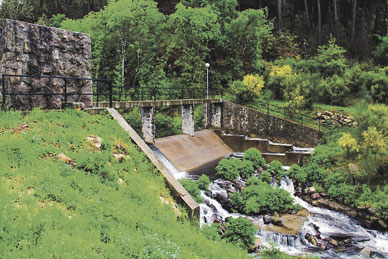At the “Variabilidad Hidrológica en la Determinación del Caudal Ecológico” seminar held at Universidad de Santiago, Dr Matías Peredo presented a new model that allows small hydroelectric power plants to have a constant flow of river water.
During the “Variabilidad Hidrológica en la Determinación del Caudal Ecológico” seminar held at Universidad de Santiago, Dr Matías Peredo, professor at the Department of Civil Engineering in Civil Works, presented a new model that allows small hydroelectric power plants to have a constant flow of river water.
The method simulates a physical habitat that includes fish and also leisure time activities, like sport fishing. The purpose of this model is to provide a way of measuring how much water these small power plants require to keep constantly operating, without damaging the ecosystem and independently of rain shortages.
Current Chilean regulations establish that there always should be a specific water flow limit to preserve river ecosystems. However, Dr Peredo says that, just like flora and fauna vary according to dry and rainy years, water flow should change to preserve that ecosystem.
“If more water runs, the volume of water should be higher; and if less water runs, then the volume should be lower. What should not happen is to always keep the minimum volume of water stated by the national regulations, as this not sustainable,” he says.
He adds that the purpose of the model developed is to allow the possibility of bringing more water to generate hydroelectric power by means of variations in the ecologic water volume, and at the same time, to protect the ecosystem. “This is the reason why this is a sustainable energy development.”
The study results could propose more diverse ways of hydroelectric power generation, promoting the incorporation of small power plants.
“The goal is not to rely only on large power plants, but also on small plants, as they could contribute to meet energy demands during dry seasons,” he explains.
The study allowed to conclude that rivers naturally change their flows, as they are flexible. This is why in dry years, water volume should be reduced: to have a delta of water that could be used by small power plants.
For his part, Dr Juan Manuel Zolezzi, President of Universidad de Santiago de Chile highlights the importance of this study and the support that our university “gives to this type of initiative, through which professors can strengthen their academic and scientific networks to build knowledge at the service of our country.”
He said that the seminar “allowed to reflect on how to transfer the results and new knowledge to environmental assessment agencies and the market through training activities, seminars, conferences and the development of written material, among others.”
In this project, Dr Peredo worked in partnership with the Environmental Assessment Service (Servicio de Evaluación Ambiental, SEA), that requested and validated this work, and the Chilean Economic Development Agency (CORFO, in Spanish), that funded the project through a public goods for competitiveness contest.
The Department of Civil Engineering in Civil Works of this university, together with a multidisciplinary team of 25 professionals including hydrologists, geographers, biologists and experts in rural development and environmental engineers, worked at this project.
Translated by Marcela Contreras



